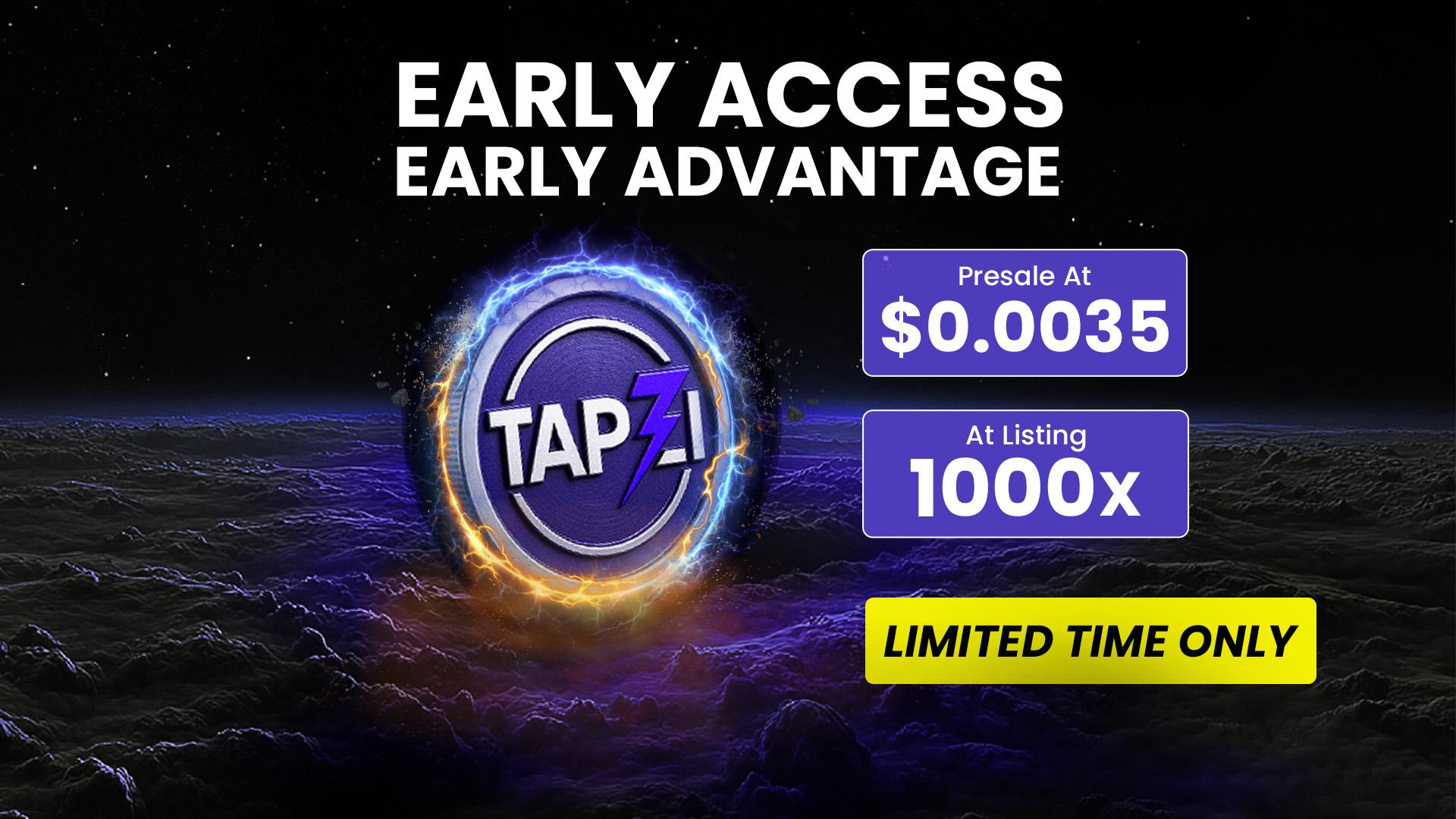The cryptocurrency market is entering Q3 2025 with clear bullish momentum, driven by record institutional inflows into Bitcoin and a spillover effect into altcoins.
Spot Bitcoin ETFs have played a defining role, with BlackRock’s iShares Bitcoin Trust now holding over 662,500 BTC and daily net inflows in the hundreds of millions. This institutional buying pressure, coupled with macro liquidity tailwinds and corporate accumulation, has pushed Bitcoin to new highs above $122,000.
Ethereum has also benefited from the launch of multiple spot ETFs, with analysts forecasting it could approach $15,000 by year-end. Broader market capitalization has risen to $3.85 trillion, with increased activity in emerging sectors like AI-integrated blockchain, decentralized infrastructure, and skill-based Web3 platforms.
In this environment, lower-priced assets under $1 have started gaining attention as investors look for asymmetric opportunities ahead of a potential “AltSeason.” Projects with tangible utility, long-term scalability, and a defined user acquisition strategy are emerging as strong candidates for organic growth.
One example is Tapzi, an upcoming Web3 gaming platform built around skill-based Player-vs-Player competition.
By focusing on verifiable fair play, audited smart contracts, and an evolving developer ecosystem, Tapzi aims to avoid speculative inflation models common in GameFi. Its roadmap includes staking-based tournaments, NFT cosmetic economies, and a cross-chain infrastructure rollout. This positions it within a sector that could see accelerated adoption as blockchain gaming aligns with broader market growth trends.
7 Best Crypto Coins To Buy Now
The following is a list of the 7 best crypto coins to buy now:
- Tapzi (TAPZI)
- Ethereum Classic (ETC)
- Uniswap (UNI)
- Chainlink (LINK)
- Litecoin (LTC)
- Internet Computer (ICP)
- KuCoin Token (KCS)
You would be thinking what makes them the best crypto coins to buy now, and let’s check the details!
1. Tapzi (TAPZI)
Tapzi is an emerging Web3 gaming platform that aligns with the market’s current shift toward utility-driven blockchain projects, particularly in the sub-$1 category, where asymmetric growth potential is attracting increased attention.
As the crypto market benefits from record ETF inflows and expanding retail participation, sectors like blockchain gaming are positioned to capture a share of this new liquidity. Tapzi differentiates itself by focusing on skill-based Player-vs-Player gaming, aiming to remove the speculative and inflationary models that have plagued many GameFi projects.
Its early playable titles, such as Chess, Checkers, Rock-Paper-Scissors, and Tic Tac Toe, are designed to highlight verifiable fair play and transparent reward mechanisms. The project’s roadmap outlines a phased rollout starting in Q3 2025 with a public website, audited smart contracts, and a structured presale with vesting to limit post-launch volatility.
 Click Here to Join the $TAPZI Presale Before It’s Too Late!
Click Here to Join the $TAPZI Presale Before It’s Too Late!
By Q4 2025, it plans to launch on PancakeSwap, host its first global tournament, and release a mobile alpha. Growth in 2026 will include NFT cosmetics, guild partnerships, multilingual support, and an SDK for third-party developers, enabling broader game integration.
Token utilities include staking to enter matches, participation in prize pools, cosmetic NFT purchases, and potential governance rights.
From an investment perspective, Tapzi’s structure emphasizes organic growth through user acquisition, tournament participation, and ecosystem development rather than speculative hype cycles.
With blockchain gaming adoption projected to expand alongside the broader market, Tapzi’s approach to scalable infrastructure and skill-based competition positions it as a candidate for gradual, utility-led value appreciation.
2. Ethereum Classic (ETC)
Ethereum Classic is the original Ethereum blockchain, preserved after the 2016 DAO hack when the Ethereum network split into two.
Maintaining the principle of “code is law,” ETC focuses on immutability, ensuring that all executed transactions remain irreversible. It supports smart contracts and decentralized applications (dApps) with a similar functionality to Ethereum, but operates on its own network and development path.
ETC uses a proof-of-work (PoW) consensus mechanism, offering a high level of security, although at the cost of higher energy consumption compared to proof-of-stake models. Its lower market capitalization compared to Ethereum provides more volatility, which can appeal to traders and long-term investors seeking asymmetric upside.
Ethereum Classic has seen renewed interest during periods of Ethereum network congestion, as it offers lower fees and faster transaction times.
With ongoing upgrades to improve scalability and interoperability, ETC remains relevant as both a legacy blockchain and an affordable entry point into the Ethereum ecosystem’s broader functionalities.
3. Uniswap (UNI)
Uniswap is one of the most influential decentralized exchanges (DEXs) in the DeFi ecosystem, enabling peer-to-peer cryptocurrency trading without intermediaries.
Built on the Ethereum blockchain, it uses an automated market maker (AMM) model instead of traditional order books, allowing users to swap tokens instantly through liquidity pools.
Liquidity providers earn fees by depositing tokens into these pools, and the platform supports a wide range of ERC-20 assets. The UNI token serves as Uniswap’s governance asset, allowing holders to propose and vote on protocol upgrades, fee structures, and ecosystem grants.
Since its launch, Uniswap has consistently ranked among the largest DEXs by trading volume, playing a crucial role in driving liquidity and accessibility in DeFi.
The protocol’s open-source nature has inspired numerous forks, but its brand recognition, active community, and continuous innovation, such as Uniswap v4’s customizable hooks, help maintain its competitive edge.
UNI’s utility and governance role, combined with the growing adoption of decentralized finance, position it strongly for long-term relevance in the crypto market.
4. Chainlink (LINK)
Chainlink is a decentralized oracle network designed to connect blockchain-based smart contracts with real-world data, APIs, and off-chain computation. This functionality is essential for enabling advanced decentralized applications across sectors such as DeFi, insurance, gaming, and supply chain management.
Without oracles like Chainlink, smart contracts would be limited to on-chain data, greatly restricting their usefulness. The LINK token incentivizes node operators to provide accurate and timely data while ensuring security through a decentralized network of independent oracles.
Chainlink has established partnerships with major blockchain ecosystems, enterprises, and data providers, giving it a leading position in the oracle sector. Its hybrid smart contract capabilities combine on-chain logic with off-chain resources, enabling more sophisticated and reliable dApp functionality.
As blockchain adoption expands, the demand for secure and scalable data integration will only increase. Consequently, Chainlink’s proven track record, developer resources, and continuous innovation make LINK a key infrastructure asset in the evolving Web3 landscape.
5. Litecoin (LTC)
Litecoin is one of the earliest cryptocurrencies, created in 2011 by Charlie Lee as a “lighter” alternative to Bitcoin. It shares Bitcoin’s core codebase but offers faster transaction times of 2.5 minutes per block compared to Bitcoin’s 10 and lower transaction fees.
LTC uses a proof-of-work consensus mechanism but employs the Scrypt hashing algorithm, which allows for more accessible mining compared to Bitcoin’s SHA-256. Often referred to as the “silver to Bitcoin’s gold,” Litecoin has been widely adopted for payments, merchant integration, and cross-border transfers due to its speed and cost-efficiency.
Its capped supply of 84 million coins provides scarcity, and it has successfully integrated technical innovations such as SegWit and the Lightning Network to improve scalability and transaction throughput.
Litecoin remains a trusted, liquid, and widely listed cryptocurrency, making it a popular choice for both newcomers and seasoned traders.
With over a decade of operational history, it continues to serve as a reliable medium of exchange and a testbed for new blockchain technologies.
6. Internet Computer (ICP)
Internet Computer is a decentralized computing platform developed by the DFINITY Foundation with the ambitious goal of extending the public internet to host backend software, smart contracts, and decentralized applications at scale.
Unlike traditional blockchain networks that primarily handle financial transactions, ICP is designed to run general-purpose applications directly on-chain without relying on centralized cloud providers. The network achieves this through its unique consensus and governance model, powered by the Network Nervous System (NNS), which manages upgrades and node participation.
The ICP token is used for governance, paying computation fees, and rewarding node providers. Internet Computer supports a range of programming languages and provides near-instant transaction finality, enabling developers to build fast, secure, and highly scalable Web3 applications.
Its architecture eliminates the need for traditional IT infrastructure layers, potentially lowering costs and increasing security for online services. By merging blockchain technology with internet infrastructure, ICP positions itself as a foundational layer for the decentralized web of the future.
7. KuCoin Token (KCS)
KuCoin Token is the native utility token of the KuCoin exchange, one of the most popular global cryptocurrency trading platforms. Launched in 2017, KCS provides holders with multiple benefits, including trading fee discounts, staking rewards, and participation in KuCoin Spotlight token sales.
One of its key features is the KuCoin Bonus, a profit-sharing mechanism where a portion of the exchange’s daily trading fee revenue is distributed to KCS holders. This creates a passive income opportunity for long-term investors. KCS also functions as a governance token, allowing users to vote on exchange-related proposals and token listings.
With KuCoin’s expansion into DeFi, NFTs, and staking services, KCS plays a central role in bridging centralized and decentralized ecosystems. The token’s value is further supported by a buyback-and-burn program aimed at reducing supply over time.
For traders and investors who are active in KuCoin’s ecosystem, KCS offers both practical utility and potential appreciation as the platform continues to grow globally.
Conclusion On The Best Crypto Coins To Buy Now
The current crypto landscape shows clear signs of momentum, with institutional capital, favorable macro conditions, and sector-specific growth trends aligning for potential gains across well-positioned projects.
Assets with strong use cases, scalability, and active development teams are better placed to capture value as liquidity expands.
While established names offer stability, emerging platforms present asymmetric growth potential. Tapzi, for instance, reflects this shift by targeting the growing blockchain gaming market through skill-based competition, transparent reward systems, and cross-chain capabilities.
In a market driven by innovation and adoption, projects combining utility with scalability stand to benefit most in the coming cycle.
Disclaimer: This media platform provides the content of this article on an "as-is" basis, without any warranties or representations of any kind, express or implied. We assume no responsibility for any inaccuracies, errors, or omissions. We do not assume any responsibility or liability for the accuracy, content, images, videos, licenses, completeness, legality, or reliability of the information presented herein. Any concerns, complaints, or copyright issues related to this article should be directed to the content provider mentioned above.






